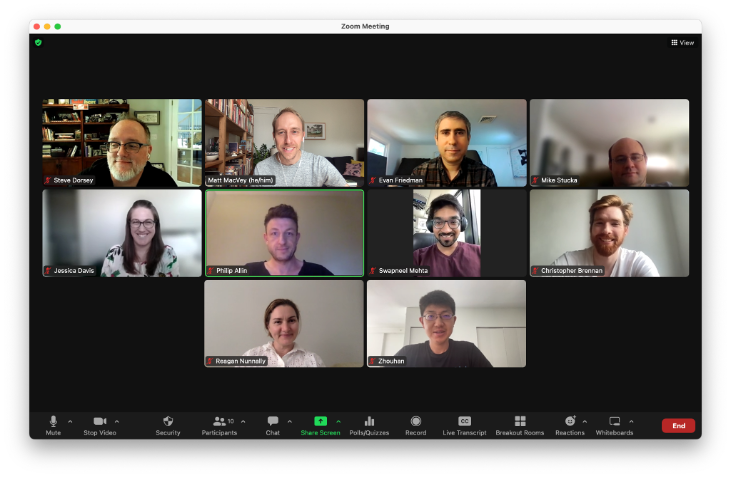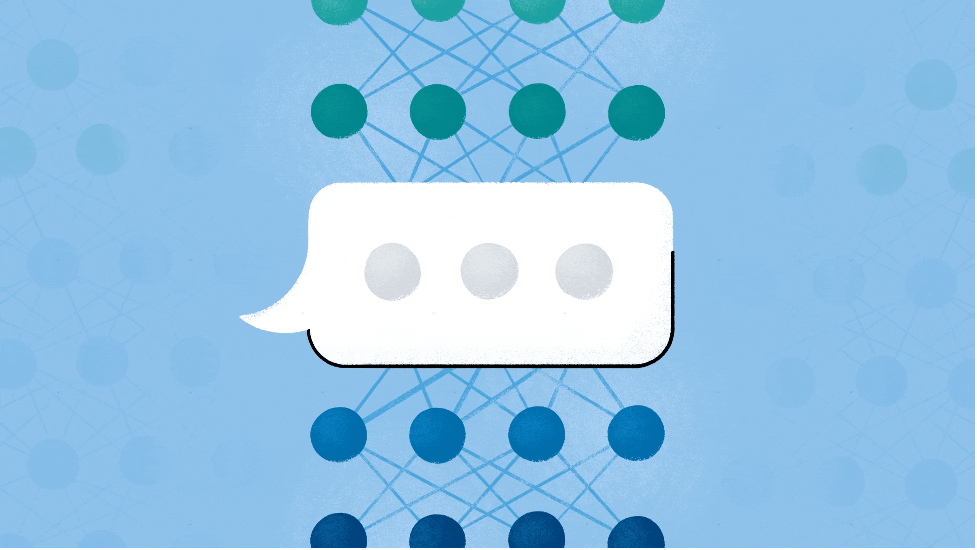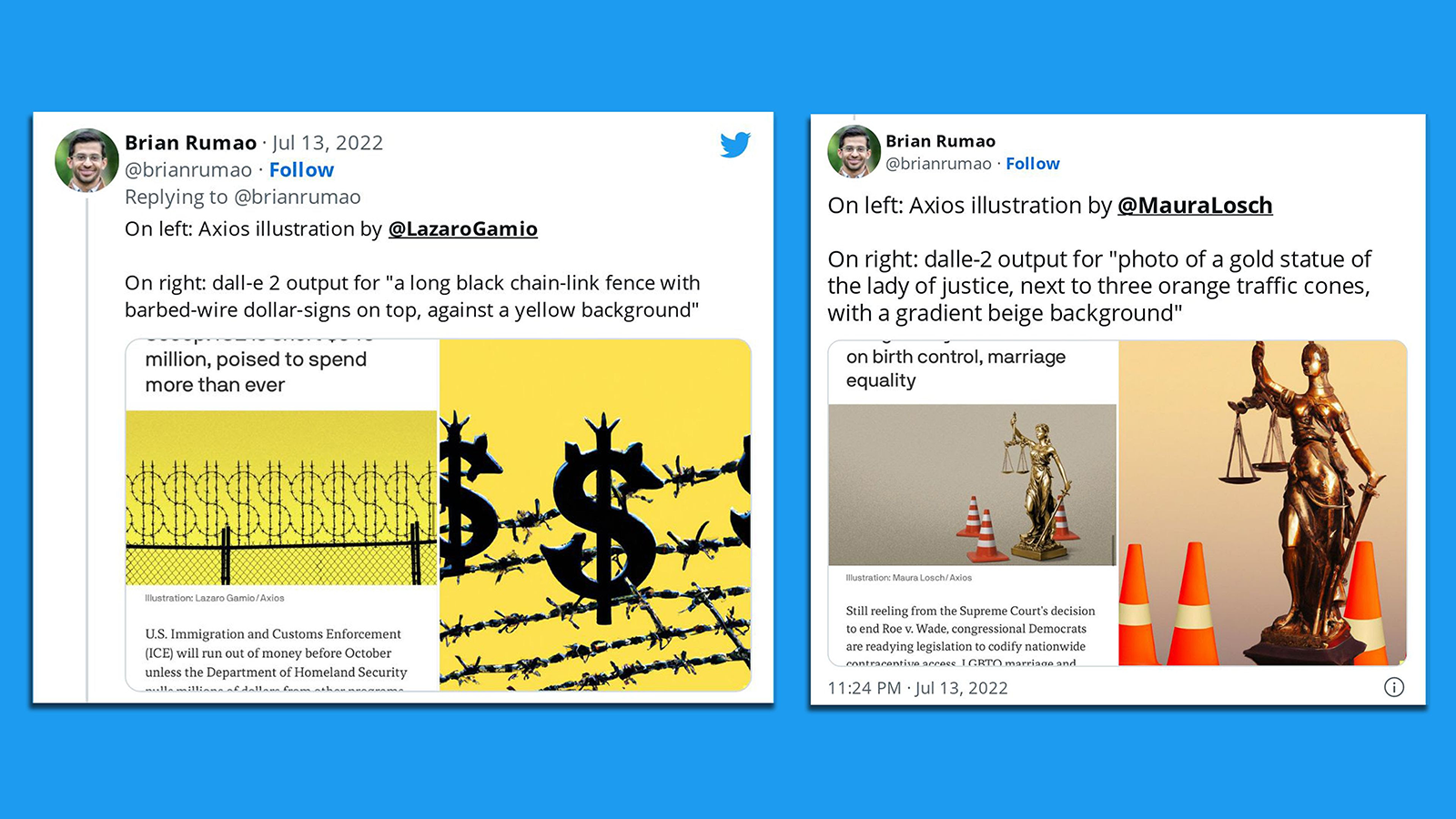AI & Local News newsletter, issue 10

CENTERS | NYC MEDIA LAB | PROJECTS | AI & LOCAL NEWS
Hello, welcome to Issue 10 of the AI & Local News newsletter.
First off, the AI & Local News projects are moving full-steam ahead. Associated Press is running design sprints with news organizations, Brown Institute’s Local News Lab is starting data collection, our five AI & Local News Challenge cohort one teams at NYC Media Lab are continuing their work, and Partnership on AI is diving into AI tools and procurement at local newsrooms.
In this issue our featured articles look at the capabilities and risks of the new and improved AI tools in release.
I’ll highlight two more noteworthy reads: “10 things you should know about AI in journalism” presented by JournalismAI manager Mattia Peretti at the Media Party conference in Argentina and the “Fairness and Friends” comic(!) by Falaah Arif Khan, Eleni Manis and Julia Stoyanovich at Center for Responsible AI at NYU.
Matt MacVey
Community & Project Lead, AI & Local News
NYC Media Lab
matt.macvey@nyu.edu
PS If this email was forwarded to you, you can easily sign up here. Take a look at our newsletter archive to learn more.
AI & Local News Initiative News
Associated Press: “AP’s Local News AI team wrapped the 15 design sprint projects in August. Five projects have been selected for development with teams at Northwestern, Stanford, Columbia and the University of Missouri. Local News AI will provide case studies of the projects so that other newsrooms can follow along with progress and implement the project in their newsroom. AP’s Ernest Kung will be at the Online News Association conference in Los Angeles next week. Please reach out if you have questions about this program and the projects, ekung@ap.org.”
Brown Institute’s Local News Lab: “As the summer comes to a close, we are transitioning from our product discovery phase and into the data collection phase with our cohort, which is the bedrock of what will become our machine learning product.
We have conducted six workshops to date that have taken our four partners through a process of understanding data, clarifying their mission and audience, to defining problem spaces, ideating solutions and ultimately selecting an AI product idea, which we refer to as “automating the ask”. In the context of our project, “the ask” is a type of call-to-action the organization presents to its audience members that leads to action which deepens engagement, supports its financial sustainability or both; newsletter sign-ups and donations are two “asks” common to all our partners.
We are excited to start defining product requirements next week which will help us home in on what the product will do more specifically and how we will measure its success.”
NYC Media Lab: “The first cohort of the AI & Local News Challenge reconvened virtually for a 100-day check in on September 8 (pictured below). It was great to see everyone and exciting to hear about the progress of all the teams since Demo Day in May. Overtone and Localizer were at ONA 22. SimPPL and Information Tracer presented at Misinformation Village at DEFCON.

We were happy to award Overtone, Localizer and Information Tracer with additional funding at the conclusion of the program. Read more about their work on our blog. We’ll open up applications for the second cohort of the AI & Local News Challenge later this fall.”
Partnership on AI: Learn more about their Local News workstream. If you'd like to get in contact with the PAI team directly and join their Quarterly meeting please reach out to Dalia Hashim, dalia@partnershiponai.org
News

New Meta BlenderBot 3 and the future of AI-powered bots
In August, Meta released a new bot called BlenderBot 3, an advanced AI-powered chatbot designed to learn through conversation. As Wired describes, “BlenderBot 3 learns facts by searching the web and retains information from all previous conversations as well as within a particular chat. It uses a new machine learning approach to identify trolls in order to ignore them.”
A Nieman Lab article by Joshua Benton, on the other hand, highlights some of BlenderBot 3’s limitations. Benton chatted with the new bot about media and business models for news. According to Benton’s conversation with BlenderBot 3 Alex Jones is “pretty cool,” Craigslist is to blame for the decline of the news industry, and Pope Francis may have endorsed Trump.
WIRED
Nieman Lab
AI is getting good and we need to talk about potential and risks
Over the past ten years, machine learning experienced a wave of progress in many areas thanks to deep learning and new, powerful hardware. Now, as The New York Times reports, a consistent pool of experts “believe that major changes are right around the corner, for better or worse.”
According to an updated post from Ajeya Cotra, senior analyst at research and grantmaking foundation Open Philanthropy, there is a 35% chance that transformational A.I. will emerge by 2036, eliminating most white-collar knowledge jobs. However, the article explains that other analysts say that “A.I. is still nowhere close to becoming sentient, or replacing humans in a wide variety of jobs.” The article ends with three pieces of advice: politicians “need to get up to speed”, tech companies “need to do a better job of explaining what they’re working on”, and media outlets need “to do a better job of explaining A.I.”
The New York Times
LessWrong
Events
Conference for Truth and Trust Online
Dates: October 13-14
Location: Hybrid. Boston, MA and virtual.
https://truthandtrustonline.
The Independent News Sustainability Summit
Dates: October 27-29
Location: Austin.
https://www.
Research Briefs
The State of Local News 2022: The Daily Newspaper, Digital Sites, and A Path Forward
The Medill School of Journalism’s Local News report gives an in-depth look at how an increasing number of regions in the U.S. are struggling to maintain trustworthy local journalism. According to the report, “The loss of local journalism has been accompanied by the malignant spread of misinformation and disinformation, political polarization, eroding trust in media, and a yawning digital and economic divide among citizens.” They have found that a fifth of the United States population (seventy million people) “live in communities without easy and affordable access to the sort of critical and credible local news and information that holds together our democracy and society at the grassroots level.”
For additional analysis and recommendations, take a look at these four posts released in August.
Northwestern Medill Local News Initiative
A Q&A with web accessibility advocate Patrick Garvin presents two bots that can help newsrooms prioritize accessibility and alt text.
The Objective

Mary Ellen Zurko stands smiling in a hallway with arms crossed. Zurko wears glasses and a French sky blue shirt with the sleeves rolled up.
Using machine learning to fight disinformation
MIT Lincoln Laboratory cybersecurity researcher Mary Ellen Zurko–who pioneered user-centered security in the 1990s–is now leading a project to fight against disinformation using machine learning.
Zurko’s project is using technology “to counter influence operations, or attempts by foreign adversaries to deliberately spread false information (disinformation) on social media, with the intent of disrupting U.S. ideals.” The lab is working on many approaches including tools that would identify deepfakes and for identifying when a single actor is behind multiple malicious accounts.
MIT News
Podcast

The 2022 Internet Health Report is a podcast (about AI)
The pandemic has changed the way we live and interact, from our daily routines, to how we connect with our work and friends. Foregoing an in-person meeting this year, Mozilla presented its 2022 Internet Health Report as a podcast. With exclusive interviews with some of the smartest people in the AI world, the podcast covers many topics, including algorithms in the workplace, disinformation in elections, satellite and data surveillance.
Mozilla Foundation
Food for Thought

Two screenshots of twitter posts by Brian Rumao. Both posts compare images of news article illustrations created by illustrators with similar images created by text-to-image translator DALL•E 2.
AI and the debate around news illustrations AI for generating images is now an increasing part of the creative toolkit. Recently they’ve entered a new market: visualizations for journalism. After a couple of experiments, the visual journalism team at Axios is debating the difference between an editorial illustration developed by a human being and a visual composite generated by AI.
Are you sure that these employees are real? Do you remember Jordan Peele’s 2018 Obama deepfake? In the last four years better technologies and pandemic remote work trends have opened the door for a rise in imposter employees. As Protocol explains, more and more employers are actively working with the FBI using new tools to revisit hiring and avoid imposter employees.
Newsletter produced by Angelo Paura




